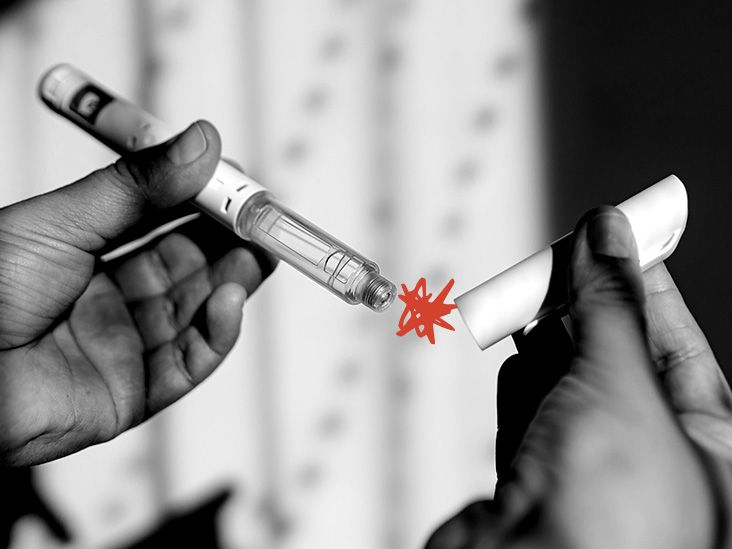The dosage of Lupkynis (voclosporin) for lupus nephritis is typically 23.7 milligrams (3 oral capsules), taken twice per day. Your dosing schedule may vary. It is important to take the Lupkynis dosage your doctor prescribes.
Lupkynis is approved by the Food and Drug Administration (FDA) to treat active lupus nephritis in adults. It’s taken along with other drugs that suppress the immune system.
The active ingredient in Lupkynis is voclosporin. Lupkynis belongs to a group of drugs called calcineurin inhibitors. Lupkynis is not available in a generic version.
This article describes the dosage of Lupkynis, its strength, and how to take it. To learn more about Lupkynis, including its uses and side effects, see this in-depth Lupkynis article.
Boxed warnings
This drug has boxed warnings about the risks of cancer and serious infection. A boxed warning is the most serious warning from the FDA. It alerts doctors and patients about drug effects that may be dangerous.
Risk of cancer: Drugs that suppress the immune system, such as Lupkynis, can increase your risk of cancer. Lupkynis raises your risk of lymphomas and skin cancers. For this reason, your doctor will monitor you closely during treatment with Lupkynis for signs of cancer. And they’ll recommend that you limit or avoid exposure to the sun and artificial UV light.
Risk of serious infection: Like other drugs that suppress the immune system, Lupkynis can increase your risk of infections. This includes viral, bacterial, fungal, and protozoal infections. In rare cases, these infections can be fatal. Infections reported in Lupkynis clinical trials include cytomegalovirus and shingles. Let your doctor know right away if you have any symptoms of infection, such as:
• fever
• cough
• painful, warm, red or discolored areas of skin
• muscle aches
• sweats or chills
For more information about the risk of cancer or infection associated with Lupkynis, talk with your doctor.
Show MoreYour doctor will likely start you on a low dosage and adjust it over time to reach the right amount for you. They’ll ultimately prescribe the smallest dosage that provides the desired effect.
The following information describes dosages that are commonly used or recommended for Lupkynis. Be sure to take the dosage your doctor prescribes for you. They’ll determine the best dosage to fit your needs. In some cases, doctors may adjust your dosage from those mentioned here.
Lupkynis form
Lupkynis is available as an oral capsule.
Lupkynis strength
Lupkynis comes in one strength of 7.9 milligrams (mg). It comes in blister packs assembled into cardboard wallets. One wallet contains 60 capsules. It’s also available in a carton that contains 3 wallets (180 capsules).
Lupkynis is approved to treat lupus nephritis. The typical Lupkynis dosage for adults with lupus nephritis is 23.7 mg (3 oral capsules), taken twice per day.
Lupkynis is typically taken with other immunosuppressant drugs for this purpose, specifically, mycophenolate mofetil and corticosteroids. An immunosuppressant is a medication that reduces the activity of your immune system.
During treatment, your doctor will monitor your kidney function. In some cases, they may recommend a different dosage of Lupkynis for you.
For more information about your specific Lupkynis dosage, talk with your doctor.
Lupkynis comes as an oral capsule that you swallow whole.
Here is some guidance on how to take Lupkynis:
- Take Lupkynis twice daily, with about 12 hours between doses. This helps maintain a steady level of the drug in your body so Lupkynis can work effectively. Do not take your doses less than 8 hours apart.
- Do not divide, crush, or chew the capsule or place it in water.
- You should take Lupkynis on an empty stomach. This means you should take it 1 hour before or at least 2 hours after a meal.
- If you have trouble swallowing capsules, see these tips for how to swallow a pill. You can also talk with your doctor or pharmacist.
- Avoid eating grapefruit or drinking grapefruit juice while taking Lupkynis.
- During your treatment with Lupkynis, your doctor will likely test your kidney function and blood pressure regularly. If these tests indicate problems with these functions, your doctor may adjust your Lupkynis dosage or stop your treatment with the drug.
If you have questions about how to take Lupkynis, talk with your doctor or pharmacist.
How long do you take Lupkynis?
Lupkynis is not typically used as a long-term treatment. Doctors usually prescribe the drug for up to 1 year to treat lupus nephritis. It’s not known whether the drug is safe to take for longer than that or whether it is still effective when taken for more than 1 year.
Your doctor will monitor you during your Lupkynis treatment. If it’s not working for you after 24 weeks, your doctor may recommend stopping the drug.
Talk with your doctor if you have questions about how long you can expect to take Lupkynis.
The Lupkynis dosage your doctor prescribes will depend on several factors. These include:
- your age
- how your body responds to Lupkynis
- other medications you take
- side effects you may have with Lupkynis
- your liver and kidney function
Other medical conditions you have can also affect your Lupkynis dosage.
Dosage adjustments
Your doctor may need to adjust your dosage if you take certain medications, such as drugs called liver enzyme* inhibitors or inducers. These drugs can affect the level of Lupkynis in your body. To find out what other drugs may interact with Lupkynis, see this Lupkynis overview article.
Your doctor may also need to adjust your dosage if you have liver damage or kidney disease or if you’re age 65 years or older.
Be sure to tell your doctor about all medications you take and any health conditions you may have.
* A liver enzyme is a type of protein in your liver that breaks down medications.
If you miss a dose of Lupkynis, take it as soon as you remember, as long as it’s within 4 hours of the missed dose. If more than 4 hours have passed since the missed dose, skip that dose and take your next scheduled dose. Do not take 2 doses to make up for the missed dose.
If you’re not sure whether you should take a missed dose or skip it, talk with your doctor or pharmacist.
To help make sure that you don’t miss a dose, try using a medication reminder. This can include setting an alarm or putting a note where you’ll see it, such as on your bathroom mirror or bedside table. You could also download a reminder app on your phone.
Do not take more Lupkynis than your doctor prescribes, as this can lead to harmful effects.
Symptoms of Lupkynis overdose
Symptoms caused by an overdose of Lupkynis can include:
- tremors
- headache
- nausea and vomiting
- infections
- fast heartbeat
- itching
- lack of energy
What to do in case you take too much Lupkynis
Call your doctor right away if you think you’ve taken too much Lupkynis. You can also call 800-222-1222 to reach America’s Poison Centers or use its online resource. But if you have severe symptoms, immediately call 911 (or your local emergency number) or go to the nearest emergency room.
Here are answers to some commonly asked questions about Lupkynis dosage.
Is the dosage of Lupkynis similar to the dosage of Benlysta?
Lupkynis and Benlysta (belimumab) are both treatments for lupus nephritis, but their forms and dosages are different.
Lupkynis comes as an oral capsule that’s taken twice daily. Benlysta, on the other hand, comes as a liquid solution that’s given as a subcutaneous injection or an IV infusion. Benlysta is given once per week, once every 2 weeks, or once every 4 weeks. The dose given for each drug also differs.
To learn more about how these drugs compare, talk with your doctor.
How long does it take for Lupkynis to start working?
Lupkynis starts to work after your first dose. But it may take weeks or months to see an effect. If you’ve taken the drug for 24 weeks and your symptoms have not improved, your doctor may recommend stopping treatment.
Talk with your doctor if you have questions about what to expect with Lupkynis treatment.
Disclaimer: Medical News Today has made every effort to make certain that all information is factually correct, comprehensive, and up to date. However, this article should not be used as a substitute for the knowledge and expertise of a licensed healthcare professional. You should always consult your doctor or another healthcare professional before taking any medication. The drug information contained herein is subject to change and is not intended to cover all possible uses, directions, precautions, warnings, drug interactions, allergic reactions, or adverse effects. The absence of warnings or other information for a given drug does not indicate that the drug or drug combination is safe, effective, or appropriate for all patients or all specific uses.


